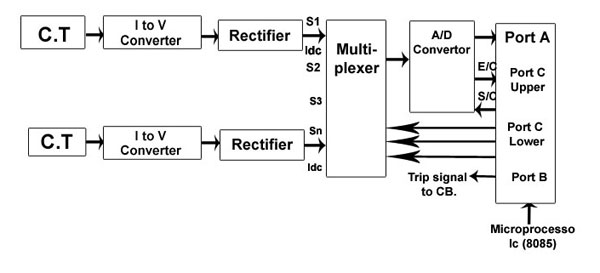Microprocessor Based Overcurrent Relay
Category: Electrical Articles
14 Aug 14
- Current is taken from C.T. and given to I to V converter because many electronics circuit require voltage signal for operation.
- The A.C. voltage is converted into D.C. voltage by using rectifier.
- This D.C. voltage is proportional to load current only.
- The output of rectifier is given to Multiplexer.
- The Multiplexer gives output to A/D Converter where Analog DC voltage is converted to Digital form (in form of O and 1 i.e. binary form).
- Microprocessor understands only codes in 0 and 1 form.
- HP (Microprocessor) gives S/C (start of conversion) signal to A/D converter (I.e. analog to digital conversion is started and HP gives permission to A/D convertor for this by sending S/C)
- When converting from analog to digital is over (finish) then A/D converter sends E/C signal to HP (E/C – End of Conversion).
- When work of A/D is over then up compare the magnitude of this incoming current with required current value (I.e. set value or reference value).
If incoming value is more – fault is occurring and trip signal is send to CB circuit breaker.


